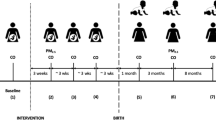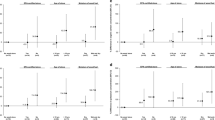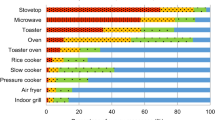Abstract
The goal of this study was to assess the impact of improved stoves, house ventilation, and child location on levels of indoor air pollution and child exposure in a rural Guatemalan population reliant on wood fuel. The study was a random sample of 204 households with children less than 18 months in a rural village in the western highlands of Guatemala. Socio-economic and household information was obtained by interview and observation. Twenty-four hour carbon monoxide (CO) was used as the primary measure of kitchen pollution and child exposure in all homes, using Gastec diffusion tubes. Twenty-four hour kitchen PM3.5 was measured in a random sub-sample (n=29) of kitchens with co-located CO tubes. Almost 50% of the homes still used open fires, around 30% used chimney stoves (planchas) mostly from a large donor-funded programme, and the remainder of homes used various combinations including bottled gas and open fires. The 24-h kitchen CO was lowest for homes with self-purchased planchas: mean (95% CI) CO of 3.09 ppm (1.87–4.30) vs. 12.4 ppm (10.2–14.5) for open fires. The same ranking was found for child CO exposure, but with proportionately smaller differentials (P<0.0001). The 24-h kitchen PM3.5 in the sub-sample showed similar differences (n=24, P<0.05). The predicted child PM for all 203 children (based on a regression model from the sub-sample) was 375 μg/m3 (270–480) for self-purchased planchas and 536 μg/m3 (488–584) for open fires. Multivariate analysis showed that stove/fuel type was the most important determinant of kitchen CO, with some effect of kitchen volume and eaves. Stove/fuel type was also the key determinant of child CO, with some effect of child position during cooking. The improved stoves in this community have been effective in reducing indoor air pollution and child exposure, although both measures were still high by international standards. Large donor-funded stove programmes need to aim for wider acceptance and uptake by the local families. Better stove maintenance is also required.
This is a preview of subscription content, access via your institution
Access options
Subscribe to this journal
Receive 6 print issues and online access
$259.00 per year
only $43.17 per issue
Buy this article
- Purchase on Springer Link
- Instant access to full article PDF
Prices may be subject to local taxes which are calculated during checkout


Similar content being viewed by others
References
Albalak R., Bruce N., McCracken J.P., and Smith K.R. Indoor respirable particulate matter concentrations from an open fire, improved cookstove, and LPG/open fire combination in a rural Guatemalan community. Environ Sci Technol 2001: 35: 2650–2655.
Balakrishnan K., Sankar S., Padmavathi R., Arnold J., Mehta S., Smith K.R., Rao C., Kumar S., Kumar P., Akbar S., and Lvovsky K. Respirable particulate levels in rural households of Andhra Pradesh, India — daily concentration and time activity data. Proceedings of the ninth Indoor Air Conference, Monterey, CA, 2002, pp. 560–565.
Boleij J.S.M., Ruigewaard P., Hoek F., Thairu H., Wafula E., Onyango F., and de Koning H. Domestic air pollution from biomass burning in Kenya. Atmos Environ 1989: 23: 1677–1681.
Boy E., Bruce N., Smith K.R., and Hernandez R. Fuel efficiency of an improved wood-burning stove in rural Guatemala: implications for health, environment and development. Energy Sustainable Dev 2000: 2: 21–29.
Boy E., Bruce N., and Delgado H. Birthweight and exposure to kitchen wood smoke during pregnancy. Environ Health Perspect 2002: 110: 109–114.
Bruce N., Perez-Padilla R., and Albalak R. Indoor air pollution in developing countries: a major environmental and public health challenge. Bull WHO 2000: 78: 1078–1092.
Bruce N., Bates E., Nguti R., Gitonga S., Kithinji J., and Doig A. Reducing indoor air pollution through participatory development in rural Kenya. Proceedings of the ninth Indoor Air Conference, Monterey, CA, 2002, pp. 590–595.
Dooley E. New stoves for better children's health? Environ Health Perspect 2003: 111: A33.
Engel P., Hurtado E., and Ruel M. Smoke exposure of women and young children in highland Guatemala: predictions and recall accuracy. Hum Organ 1997: 56: 408–417.
Ezzati M., and Kammen D. Quantifying the effects of exposure to indoor air pollution from biomass combustion on acute respiratory infections in developing countries. Environ Health Perspect 2001: 109: 481–488.
McCracken J.P., and Smith K.R. Emissions and efficiency of improved wood burning cookstoves in highland Guatemala. Environ Int 1998: 7: 739–747.
Mehta S., Smith K.R., Balakrishnan K., Sankar S., Padmavathi R., Kumar S., and Akbar S. Using household characteristics to predict respirable particulate levels in rural households of Andhra Pradesh, India. Proceedings of the ninth Indoor Air Conference, Monterey, CA, 2002, pp. 596–601.
Naeher L.P., Leaderer B.P., and Smith K.R. Particulate matter and carbon monoxide in highland Guatemala: indoor and outdoor levels from traditional and improved wood stoves and gas stoves. Indoor Air 2000: 10: 200–205.
Naeher L., Smith K.R., Leaderer B.P., Neufeld L., and Mage D.T. Carbon monoxide as a tracer for assessing exposures as particulate matter in wood and gas cookstove households of highland Guatemala. Environ Sci Technol 2001: 35: 575–581.
Smith K. Biofuels, Air Pollution And Health: A Global Review. Plenum Press, New York, 1987.
Smith K., Samet J., Romieu I., and Bruce N. Indoor air pollution in developing countries and acute respiratory infections in children. Thorax 2000: 55: 518–532.
United States Environmental Protection Agency (USEPA). Revisions to the National Ambient Air Quality Standards for Particulate Matter. Federal Register July 18, 1997: 62(138).
Von Schirnding Y., Bruce N., Smith K.R., Ballard-Tremeer G., Ezzati M., and Lvovsky K. Addressing the Impact of Household Energy and Indoor Air Pollution on The Health of the Poor: Implications For Policy Action and Intervention Measures. World Health Organisation, Geneva, 2002.
World Health Organisation. The World Health Report 2002: Reducing Risks, Promoting Healthy Life. WHO, Geneva, 2002, pp. 69–70.
World Resources Institute, UNEP, UNDP, and World Bank. 1998–99 World Resources: A Guide to The Global Environment, Oxford University Press, Oxford, UK, 1998, pp. 65–67.
Acknowledgements
This study was funded by a grant from the Department of Child and Adolescent Health and Development, WHO, Geneva. John McCracken was supported by a Fulbright Fellowship.
Author information
Authors and Affiliations
Corresponding author
Rights and permissions
About this article
Cite this article
Bruce, N., McCracken, J., Albalak, R. et al. Impact of improved stoves, house construction and child location on levels of indoor air pollution exposure in young Guatemalan children. J Expo Sci Environ Epidemiol 14 (Suppl 1), S26–S33 (2004). https://doi.org/10.1038/sj.jea.7500355
Published:
Issue Date:
DOI: https://doi.org/10.1038/sj.jea.7500355
Keywords
This article is cited by
-
Investigating the temporal dynamics of sub-micron particles and particle-bound transition metals in indoor air of a metropolitan city
Environmental Geochemistry and Health (2024)
-
Indoor Air Pollution in Indian Rural Kitchen: A Case Study
MAPAN (2021)
-
Mitigation of indoor air pollutants using Areca palm potted plants in real-life settings
Environmental Science and Pollution Research (2021)
-
Effects of indoor air pollution on household health: evidence from Turkey
Environmental Science and Pollution Research (2021)
-
Indoor air quality of everyday use spaces dedicated to specific purposes—a review
Environmental Science and Pollution Research (2018)



